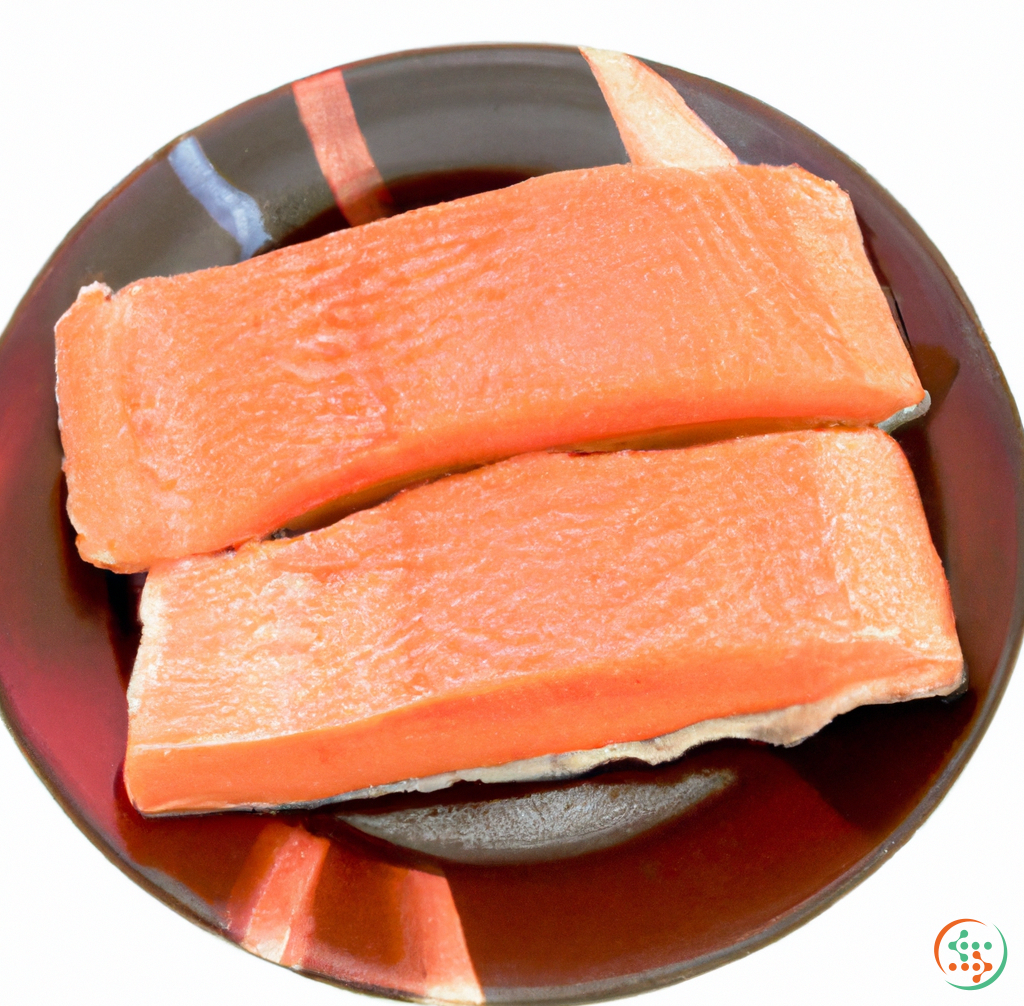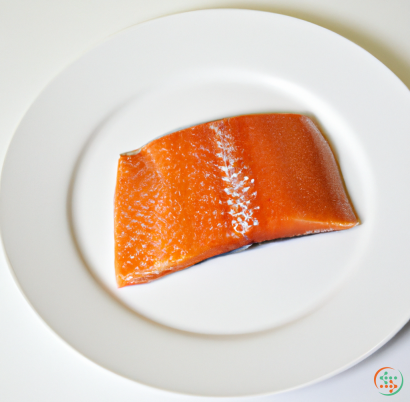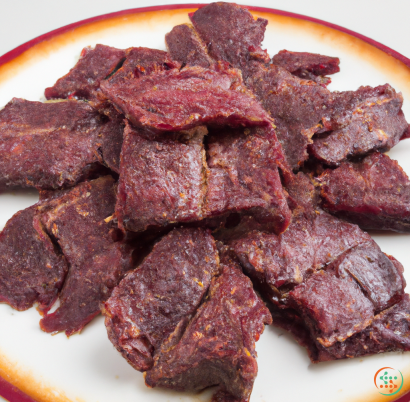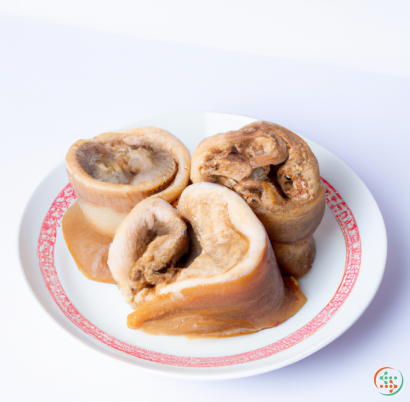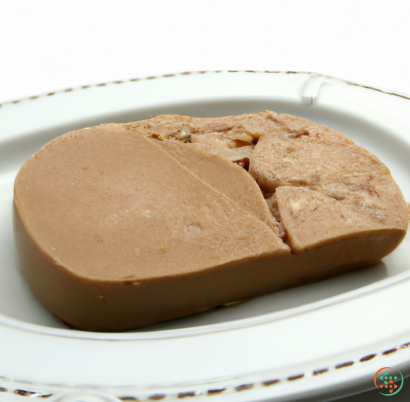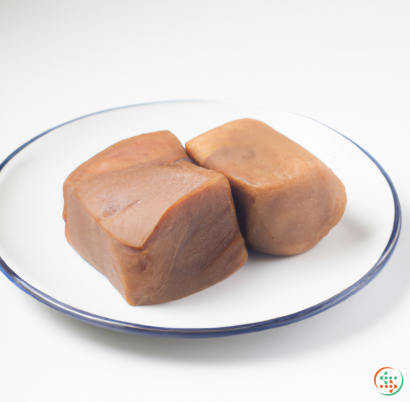Chum Salmon
Chum salmon (Oncorhynchus keta) is a species of salmon found in the northern Pacific Ocean and rivers that flow into it. It is one of the five species of salmon that are used for commercial fishing, and is also highly valued for its roe, which are an extremely popular source of caviar. Chum salmon is known as keta or dog salmon in some parts of the world, and is sometimes called calico salmon due to its characteristic gray-green and pink coloring.
Chum salmon are usually small to medium sized. Adult females can reach up to 28 inches long and weigh up to 11 pounds while adult males can reach 16 inches and weigh up to 4.5 pounds. The fish also show characteristic bar marking on their back, as well as spots on their sides and belly that are said to be similar to those of a calico cat. Chum salmon can also range in color from silver to bright red or bronze.
The Chum salmon's lifespan is quite short and the average is only 3-5 years, a much shorter life cycle than other salmon species. They spawn in mid to late summer, usually in July and August, depending on their location. Generally, females are more dominant when it comes to migration and spawning. They will swim upstream and lay their eggs in gravel beds and then will move further upstream for the next spawning season.
Once eggs have been laid and have had a chance to hatch, the newly hatched fry will stay in the river for anywhere from a few weeks to a few months, depending on the seasonal water levels. They can often be seen migrating downstream, usually at night when they are most active.
Once the fry reach the ocean they will spend most of their time there and the average lifespan of a chum salmon is 3-5 years. The adult fish will feed mainly on small crustaceans, squid, and other small fish, while the young fry will feed on plankton and insects.
In terms of fishing, Chum salmon can often found in shallow waters near freshwater sources, where they may be caught using techniques such as trolling and cast netting. The fish can also be caught in the deeper ocean waters, where larger gear such as a rod, reel and deep jigging will be needed. Chum salmon can also be harvested with nets at the mouths of some of their spawning rivers and streams, although this is becoming rarer, as the fish become more widely fished.
Chum salmon is a popular fish species for both recreational and commercial anglers due to its strong, meaty flavor and its availability throughout the year. It is great for grilling and smoking and is often used in sushi and sashimi dishes. Chum salmon roe is highly sought after, featuring bright orange eggs, packing in a ton of flavor, and selling for a high price. The abundance of this species in the wild, along with its delicious taste, makes it a favorite of sustainable seafood advocates.
Despite its popularity, overfishing has led to a depletion in some of the region’s fisheries, resulting in more limited sources for the chum salmon population. In addition, habitat loss from logging, mining, and other activities has had a negative effect on these fish. To help save the species, many local conservation organizations have enacted various initiatives and regulations to protect the chum salmon's habitat and promote more sustainable fishing practices.
Overall, the Chum salmon is a unique and valuable part of the Pacific ocean and river ecosystems. With proper management, this species has great potential for being managed sustainably, allowing conservationists and anglers to enjoy its beauty and delicious flavor for many years to come.
As seafood lovers know, salmon is a delicious, nutritious meal; especially when it is cooked properly. Whether it’s Atlantic or Pacific salmon, salmon is healthy, with plenty of omega-3 fatty acids, vitamins and minerals. But not all salmon dishes are created equal. One fantastic type of salmon that can be found in many restaurants, markets, and even some home chefs’ kitchens, is Chum Salmon. Chum Salmon, also known as Keta, is wild-caught by professional fishermen and is rich and flavorful. But what makes Chum Salmon different from other types of salmon? How does a Chum Salmon begin its life and travel from a river to a dinner plate?
From Spawn to Fry
Chum Salmon begin their lives similar to other salmon. Each fall, mature Chum Salmon will swim upstream to their native tributaries or rivers, and begin the spawning process. During spawning, the male and female fertilize and lay thousands of eggs in a carefully chosen, graveled-bottom nesting site. When the parents have devoted their energy to the spawning process, they will swim away, leaving behind the eggs which are buried in the gravel and river sediment.
The eggs incubate during winter, and in early spring the embryos within the eggs begin to develop eyes and yolk sacs. Once eye development is complete, and the embryo fish, which are now known as alevin, will hatch and use the attached yolk sac as a source of food for survival. Depending on the temperatures and river flow system, the alevin may stay in their nest for an entire month before emerging and beginning their life as fry.
Once the alevin emerge from their nest, they become bright, silvery-colored fry, measuring only a few centimeters in length and scouring their river environment for plankton to feast upon. The fry remain in the shallows of their parent river, as they are too small to ascend or descend waterfalls or other obstacles. During this period, young Chum Salmon endure a great deal of danger as predators such as seals, otters, and even bald eagles could become a potential danger. The river temperature also plays a crucial role in the survival of fry; if the temperature gets too warm (over 68°F), fry health and survival rate diminishes drastically.
To Juvenile and Onward
As a few more months pass, the fry grow in size, reaching approximately 4 inches in length, and are now classified as juvenile salmon. These juvenile salmon will leave their parent river and move downstream into estuaries, bays, and larger rivers, where they will find plenty of food and evade larger predators. At this point, the species of the juvenile salmon usually becomes apparent. Though most types of salmon have the same physical characteristics, the coloring of male juvenile Chum Salmon can range from steel gray to teal blue, while their backs remain a distinct mid to dark-gray color.
During the winter, juvenile Chum Salmon leave the estuaries and venture into the open ocean, usually with the currents of the ocean or guided in part by environmental cues such as tidal cycles, day length, and water temperatures. Fish size varies while they are juvenile, but they will average 14 inches in length as they move outward. This is also the time that they are most vulnerable to ocean predators such as seals and killer whales since they are no longer protected by the river ecosystem.
As a Mature Fish
As the juvenile fish roam further into the ocean, their physical features change. Over the next 3 to 6 years, depending on the species and the availability of forage in the ocean, Chum Salmon grow to adulthood, resulting in improved vision and enhanced swimming abilities. Mature Chum Salmon are larger in size then their juvenile counterparts, and have a more defined back and tail fin. Female Chum Salmon are slightly larger than their male counterparts, reaching up to 32 inches in length compared to the males which reach 28 inches. The coloring of their heads will also start to turn darker, varying between an orange-brown to a dark-gray depending on the sex.
Although these fish may move away from their original spawning beds, they will return to those same beds when it is time to spawn during late summer and early fall. Unlike Atlantic Salmon, which typically die once they have spawned, Chum Salmon can make the journey several times, depending on environmental conditions, availability of food, and the strength of the river. Both male and female Chum Salmon spend energy and energy preparing the spawning bed by swimming together and raking the gravel with their tails. Like the spawning process at the beginning of their life, this too has a melancholy side—For some fish, this process can represent their last journey.
From River to Table
Today, Chum Salmon are wild-caught by fishermen and the majority are marketed fresh. Catching Chum Salmon is no easy feat, however. Chum Salmon typically favor shallower, calmer waters for feeding, and are prone to being spooked, so careful technique and an understanding of the local environment is key. Typically, commercial fishing boats will work as a team to cover more ground, and can use nets and trolling lines to round up their catch. Then they’ll be taken on board and later transferred to a fish processing facility to be filleted, frozen, and packaged for sale.
From there, Chum Salmon can travel to retail stores, supermarkets, or fishmongers around the world — ready to make its way to your dinner plate. For health-conscious individuals, Chum Salmon has plenty of benefits. It is low in fat, and has a good amount of Omega-3 fatty acids, which are excellent for cardiovascular health. The flavor of Chum Salmon is mild and sweet, and is often complimented with a variety of herbs and spices for the perfect dinner dish.
In conclusion, Chum Salmon is a delicious, healthy and sustainable choice when selecting seafood. Their amazing journey from a river to a dinner plate is a testament to the persistence and survival of this species, and to their individual determination and strength. A plate of Chum Salmon is a plate of respect for the cycle of life, and we can all enjoy this delicious meal from river to table.
| Vitamin A | 0.034 mg | |
| Vitamin B1 | 0.09 mg | |
| Vitamin B2 | 0.22 mg | |
| Vitamin B3 | 0.00853 grams | |
| Vitamin B5 | 0.87 mg | |
| Vitamin B6 | 0.46 mg | |
| Vitamin B9 | 0.005 mg | |
| Vitamin B12 | 0.00346 mg |
| Calcium | 0.014 grams |
Daily Value 1.3 g
|
| Iron | 0.71 mg |
Daily Value 0.018 g
|
| Magnesium | 0.028 grams |
Daily Value 0.4 g
|
| Phosphorus | 0.363 grams |
Daily Value 1.25 g
|
| Potassium | 0.55 grams |
Daily Value 4.7 g
|
| Sodium | 0.064 grams |
Daily Value 2.3 g
|
| Zinc | 0.6 mg |
Daily Value 0.011 g
|
| Copper | 0.07 mg |
Daily Value 0.9 mg
|
| Manganese | 0.02 mg |
Daily Value 0.0023 g
|
| Selenium | 0.0468 mg |
Daily Value 0.055 mg
|
| Tryptophan | 0.289 grams | |
| Threonine | 1.132 grams | |
| Isoleucine | 1.19 grams | |
| Leucine | 2.099 grams | |
| Lysine | 2.371 grams | |
| Methionine | 0.764 grams | |
| Cystine | 0.277 grams | |
| Phenylalanine | 1.008 grams | |
| Tyrosine | 0.872 grams | |
| Valine | 1.33 grams | |
| Arginine | 1.545 grams | |
| Histidine | 0.76 grams | |
| Alanine | 1.562 grams | |
| Aspartic Acid | 2.644 grams | |
| Glutamic Acid | 3.854 grams | |
| Glycine | 1.239 grams | |
| Proline | 0.913 grams | |
| Serine | 1.053 grams |
| Total Sugars | 0.131141 grams |
per 100g
|
| Myristic acid (14:0) | 0.19 grams |
|
| Palmitic acid (16:0) | 0.75 grams |
|
| Stearic acid (18:0) | 0.13 grams |
|
| Total Saturated fatty acids: | 1.07 g | |
| Erucic acid (22:1) | 0.41 grams |
|
| Oleic acid (18:1) | 1.05 grams |
|
| Palmitoleic acid (16:1) | 0.28 grams |
|
| Gadoleic acid (20:1) | 0.24 grams |
|
| Total Monounsaturated fatty acids: | 1.98 g | |
| Omega-3 Timnodonic acid (20:5) | 0.3 grams |
|
| Omega-3 Clupanodonic acid (22:5) | 0.1 grams |
|
| Linolenic acid (18:3) | 0.04 grams |
|
| Linoleic acid (18:2) | 0.08 grams |
|
| Total Polyunsaturated fatty acids: | 0.52 g | |
| Cholesterol | 0.1 grams |
|
| Total Sterols: | 0.1 g | |
